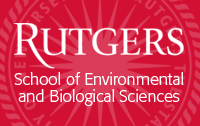Main Content
Customized On-site Courses
This is a sample agenda for a multi-jurisdiction course we offered in Washington State. When the same course was offered in Florida, it was approved for Continuing Education Unit credits (CEUs) by the Florida Division of Law Enforcement. If you so desire, we can work with you in advance of the course to apply for CEU credits from whatever agency is appropriate.
Community Noise Enforcement Certification Course (Sample Agenda)
Washington State Association of Code Enforcement
Seattle, Washington
February – 20XX
Day 1
- The Fundamentals of Sound
- Intensity
- Units of Measurement and Reporting
- Sound Level Meter Calculations of Sound Pressure Levels
- Range of Human Hearing
- Frequency
- Units of Measurement and Reporting
- Range of Human Hearing
- Relative Response to Frequencies and Weighting Systems (A-scale, C-scale)
- Octave Bands
- Intensity
- Operation of Sound Level Meters
- Specific to Sound Level Meters of the following jurisdictions: Seattle, Tacoma, Snohomish County, Olympia and Everett
- Field Calibration
- Timing
- Manufacturer’s Requirements
- Proper Technique
- Use of Meter
- Acceptable Weather Conditions
- Parameters for Valid Readings
- Measurement and Documentation of Sound Levels
- Field Exercise to Familiarize Students with Use of Sound Level Meter
- Measurement of Ambient Sound Level
- The Importance of Accurately Assessing the Ambient Sound Level
- Ambient Sounds vs. Extraneous Sounds
- Strategies for Measuring the Ambient Sound Level in the Real World
Day 2
- The Mathematics of Sound Level Measurement
- Calculation of the Source Sound Level by Subtracting the Ambient Sound Level from the Total Sound Level (Source +Ambient)
- Determination of Optimal Measurement Time Intervals
- Meter/Reader Tolerances
- Field Exercise
- Isolating Source Sound from Ambient Sound
- Performance and Nuisance Codes in the Following Jurisdictions: Seattle, Tacoma, Snohomish County, Olympia and Everett
- Review of Definitions
- Word-by-Word Review of Codes
- Specific Notation of Reporting Requirements Generated by Codes
- Areas of Potential Courtroom Challenge
- Noise Measurement Report Form
- Line-by-Line Review of Proper Completion
- Field Exercises
- Development of a Solid Court Case (includes some review)
- Meter/Calibrator
- Reader Certification
- Code Requirements
- Procedure
Day 3
- Review of Mathematics of Sound
- Testimony Development
- Investigating and Proving that the Alleged Source is the Actual Source
- Observations and Testimony of Impact
- Field Exercises
- Video Presentation: “Sound and Fury”
- Enforcement Options
- Performance Violation vs. Nuisance Violation
- Fine vs. Consent Order
- The Art of the Bluff
- Physical and Psychological Impacts of Noise Exposure
- Non-Auditory Impacts
- Psychological Impacts
- Strategies for Managing Agitated Complainants
- Hearing, Hearing Loss
- Physiology of Hearing
- Mechanics of Hearing
- Impacts of Noise Exposure (Hearing Loss: Conductive / Sensory-Neural)
- Practical Field Exam
- Written Exam
Rutgers Noise Technical Assistance Center (RNTAC)
School of Environmental and Biological Sciences
Rutgers, The State University of New Jersey
14 College Farm Rd., New Brunswick, NJ 08901-8551
Environmental & Natural Resource Sciences Bldg (ENRS) | 848-932-5784
Questions? Contact Pamela Springard-Mayer at pspring@rutgers.edu
